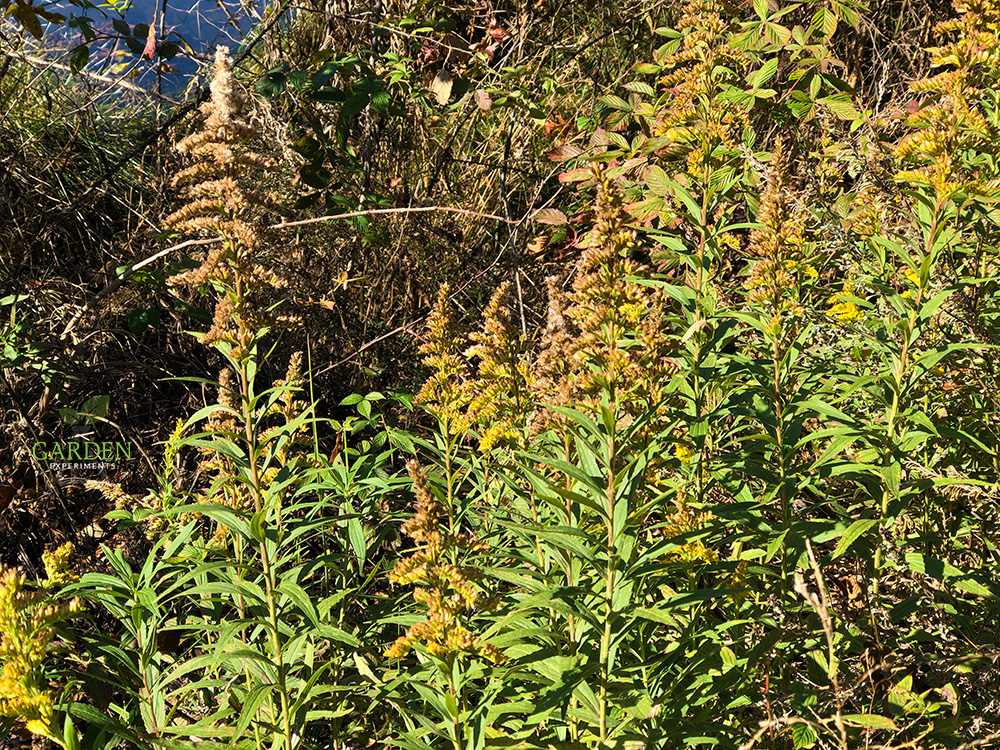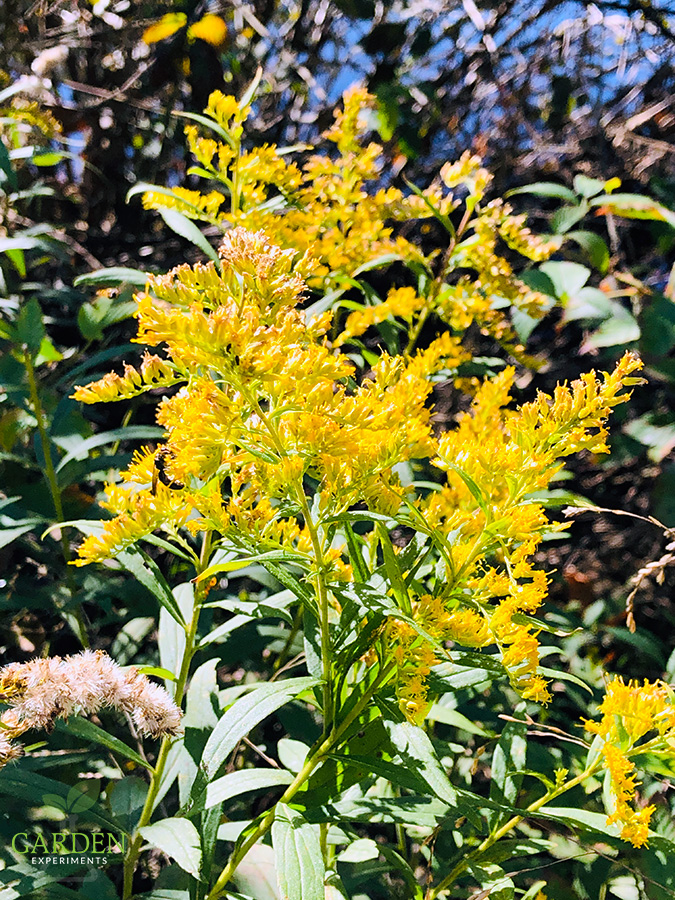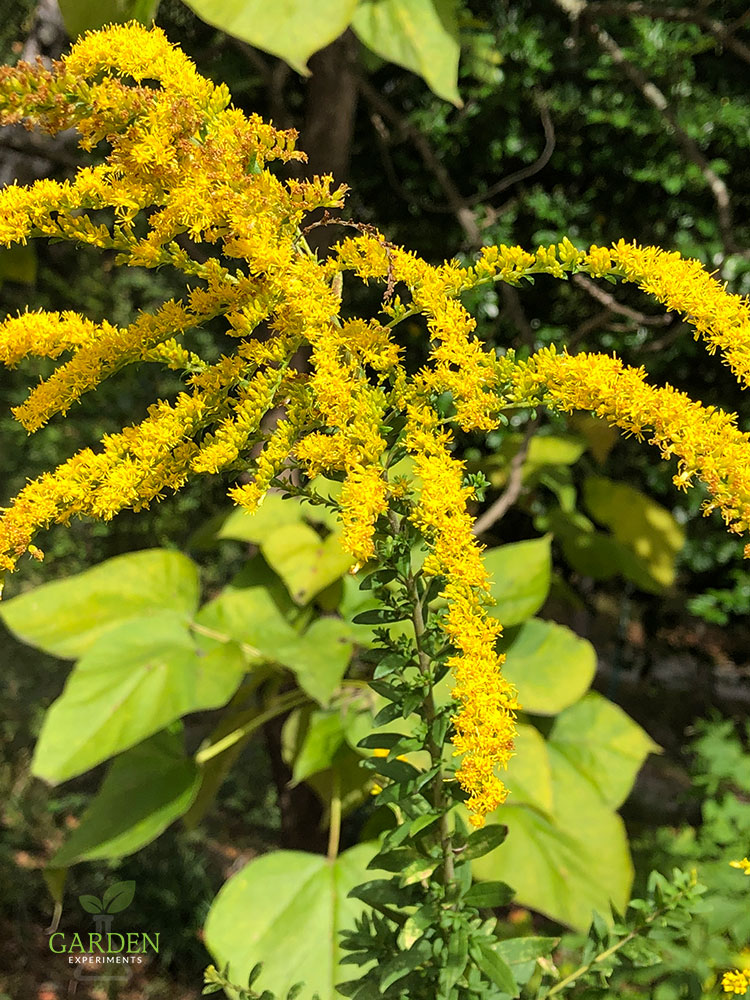You’ve probably seen the bright yellow-gold blooms of goldenrod along roadsides, in ditches, or fields. This plant is prevalent throughout most of the U.S., except in some northwestern states. It’s a plant with a lot of wildlife benefits.
Native Range
There are about 120 different species of goldenrod and most of them are native to the U.S. The Chicago Botanical Garden evaluated many species over a five-year period and selected 6 with top ratings for gardens.
Goldenrod is common in prairies, grasslands, and roadsides. It can even be found growing in forests.
Flowers
The blooms appear in summer and can last into late fall (July to November). The month it blooms depends on which state it is growing in. The multiple small flowers are produced at the end of the plant.
Including Goldenrod in Your Garden
I usually include natives in my garden; however, goldenrod has the strong possibility of becoming overgrown in a garden, so I have not yet added it to my native garden area.
The seeds are wind-dispersed, allowing it to colonize new, open ground easily. One scientific study showed that one field of goldenrods averaged 3,070 seeds per plant (SOURCE). That’s a lot of seed!
Some species of this plant can spread rapidly by underground rhizomes, making it more difficult for other plants to grow in the same area.
The allelopathic effect of the chemicals goldenrod produces also reduces competition from other plants. This might be one native plant to avoid including in your garden – but perhaps it would be suitable in an open field where other wildflowers are growing.
So all this to say, if you’re going to add this plant into your garden, make sure it is somewhere that you don’t mind it spreading rapidly and taking over – like a wildflower garden or meadow.

Wildlife Uses for Goldenrod (Solidago)
Many insects feed on the nectar and pollen produced by goldenrod. This includes bees, moths, flies, beetles, wasps, and butterflies. Praying mantises might be found on these flowers, seeking to eat the insects it attracts.
There are also about 50 species of insects that feed on the stem of goldenrod species when they are in their larval or nymph form. If you see galls on the stems of the plant, these insects are the cause.



White-tailed deer and rabbits will feed on the plant’s leaves, though this plant is considered deer-resistant. Turkey and ruffed grouse will also feed on the leaves in winter. Certain small mammals will feed on the seeds as well. These include squirrels, raccoons, opossums, and foxes.
Some birds feed on the seeds of the plant, including grouse, pheasant, and songbirds. Downy woodpeckers and chickadees have been recorded as feeding upon the insects that create the galls on the these plants (SOURCE).
It’s a late bloomer in many southern states and can still be seen being fed upon by bees in late fall, or early winter in some places. I caught this patch blooming (and feeding the bees) in late November in Georgia.
Does Goldenrod Cause Seasonal Allergies?
Just a side note for those of us who suffer from seasonal allergies. Goldenrod blooms at the same time as ragweed, so it is often confused as an allergen producer. However, the ragweed pollen is the culprit for most allergy sufferers.
Fun Facts About Goldenrod
Here’s a fun science fact about goldenrod: it produces a chemical at the roots that discourages the growth of other plants nearby. This process is called allelopathy.
Goldenrod is the state flower of Kentucky and Nebraska.

